Author // Mary Rowland Friday, 11 March 2022
Instructional materials matter and looking closely at the materials you use in your classrooms is important. Every Ohio student deserves the opportunity to learn from high-quality, standards-aligned instructional materials to become a resilient, lifelong learner who contributes to society.
Studies have shown that using high-quality, coherent curriculums and instructional materials leads to student growth in learning and achievement. We also know that students gain months of learning when teachers use high-quality instructional materials.
While securing coherent curriculum and professional development for teachers is the first step in ensuring equity in Ohio’s classrooms, identifying high-quality supplemental materials at grade level for all learners can be helpful in increasing student engagement, meeting diverse needs, and filling instructional gaps.
For more than 20 years, INFOhio has been providing Ohio schools and districts with quality supplemental resources available at no cost. INFOhio’s resources provide educators and students with premium, vetted content such as eBooks, videos, lesson plans, instructional web tools, and training and support materials that can be used for teaching and learning. When paired with a high-quality curriculum, these resources can provide additional engaging and innovative materials for student growth and achievement and can scaffold student learning if there are gaps.
While the criteria for high-quality instructional materials is broad, key indicators can be applied to materials to determine their effectiveness for student learning. For this Teach With INFOhio blog series, the premium content provided by INFOhio will be shared, highlighted by its
These are the categories of criteria for the Instructional Materials Rubric, developed by INFOhio's Instructional Team in collaboration with the Ohio Department of Education. EdReports' and Achieve's EQuIP rubrics were models for this tool. You can feel secure knowing that using the instructional materials from INFOhio will provide students with the quality materials they need to be successful and grow as learners.
No longer static encyclopedias on library shelves, World Book Online offers interactive, dynamic, cross-curricular learning resources such as videos, images, interactive learning games, and webquests in the hands of students, educators, and parents. World Book Online also offers a robust collection of instructional support for educators including lesson plans, standards-alignment, and webquests. World Book Online meets the needs of students and educators at every stage of learning with the following resources spanning grades PreK–12.
World Book Online is funded in part by a federal IMLS Library Services and Technology Act (LISTA) grant through the State Library of Ohio and additional funding is provided by Libraries Connect Ohio partners: INFOhio, OhioLINK, and OPLIN.
Educators can feel secure in using digital content from World Book Online as quality content to supplement the curriculum and scaffold learning. Content meets the criteria set by the Instructional Materials Rubric and supports rigor and acceleration in classrooms.
These criteria and indicators help educators identify instructional materials that are aligned with the rigor of the Ohio Learning Standards and rely on research and scientific thinking for best results in the classroom.
Content Builds on Prior Knowledge
Using World Book Advanced, middle and high school educators can build background knowledge with a variety of sources using the Teaching with Documents lessons. Found in the Educator Tools section of World Book Advanced, Teaching with Documents is a collection of lessons focusing on one or more primary source images. Each lesson includes historical background text, enlargeable images, and discussion questions. Teaching with Documents lessons use a variety of primary sources from images and political cartoons to speeches and letters. Each historical background text includes hyperlinks to additional World Book Advanced articles to support or extend student learning about the topic. Discussion questions help the educator guide students through an analysis of the primary source and build a foundation for future learning.
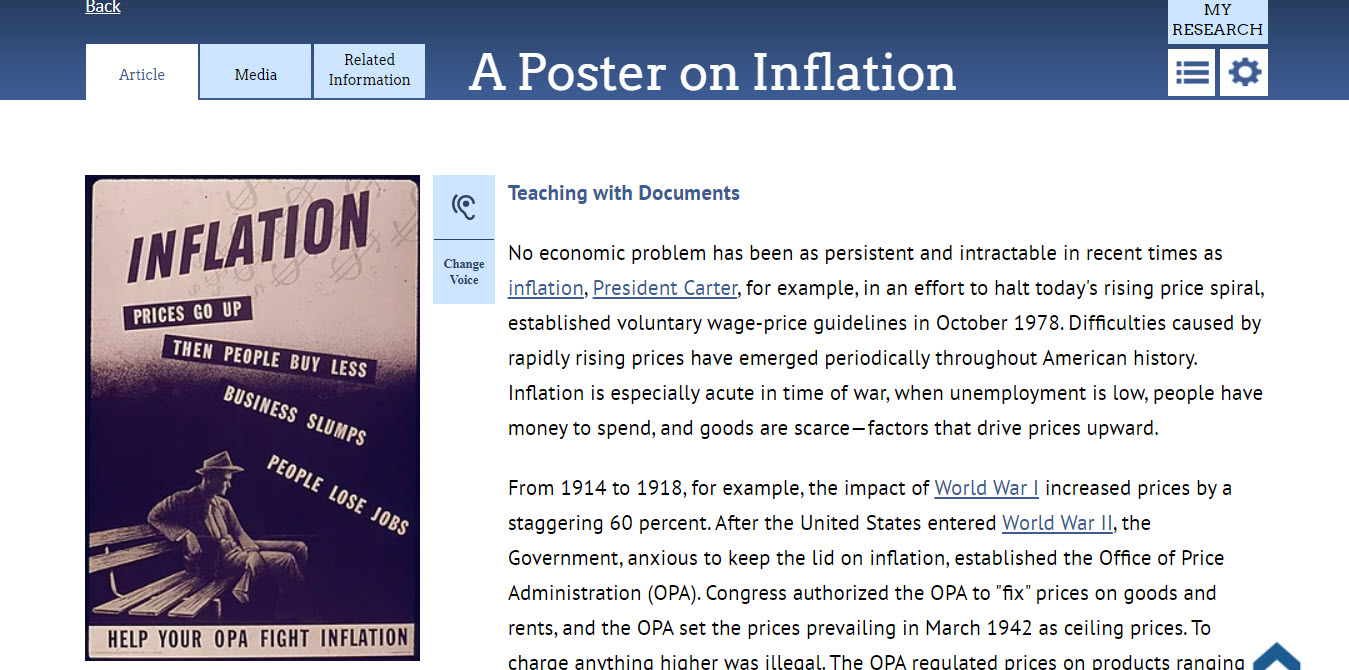
Content Includes Options for Differentiation to Meet Needs of All Learners
Students in the classroom have a variety of learning needs, and educators have the task of meeting each student where they are on their learning journey and providing the instruction and support to help a student learn and grow. Therefore, instructional materials that have flexibility in language, ability, and cognitive capability and supports for complex grade-level text help educators meet the diversity of needs within their classroom.
Articles in World Book Kids, World Book Student, and World Book Advanced can be translated into over 50 languages, supporting the linguistic needs of ELL students who can choose to have the article translated into their first language.
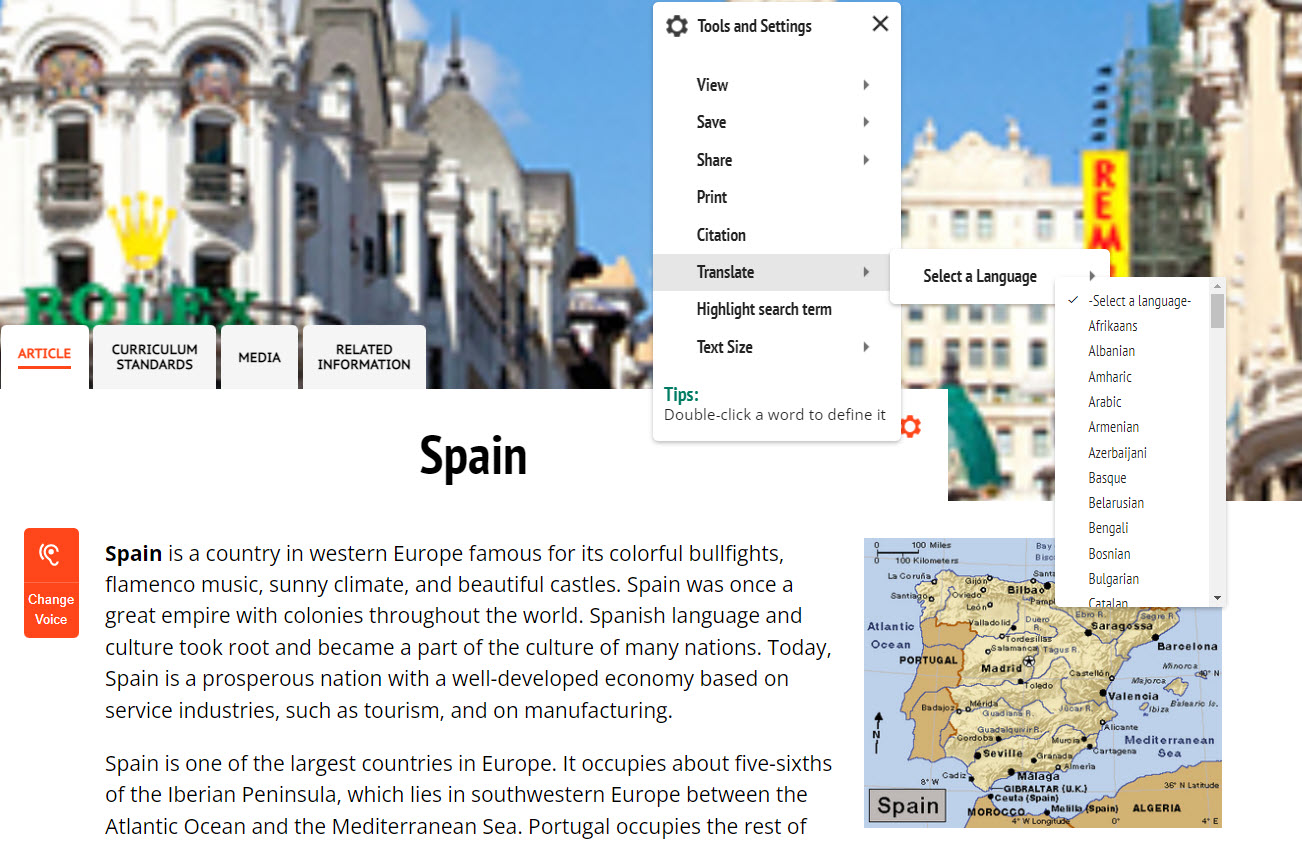
Many of the articles located within World Book Kids, World Book Student, and World Book Advanced include the Lexile Level to help educators make informed decisions about content selected to supplement the curriculum.
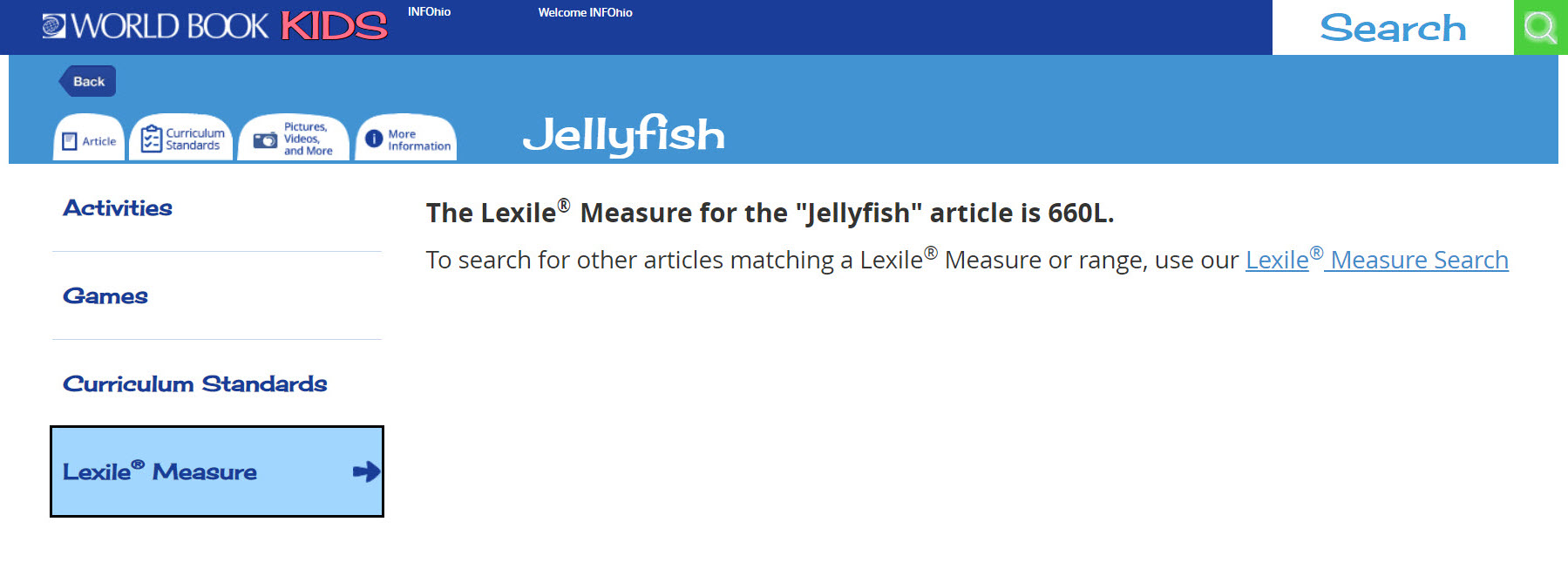
Instructional Approaches Used are Reflective of Best Practices and Research on What Works in Education
Much of the content in World Book Online is aligned to Ohio Learning Standards. Educators can locate content using the learning standards for grades K–12 to supplement their curriculum. The standards search feature is located in the Educator Tools section of each World Book resource. The graphic below is for World Book Advanced, but the interface is similar for all World Book resources.
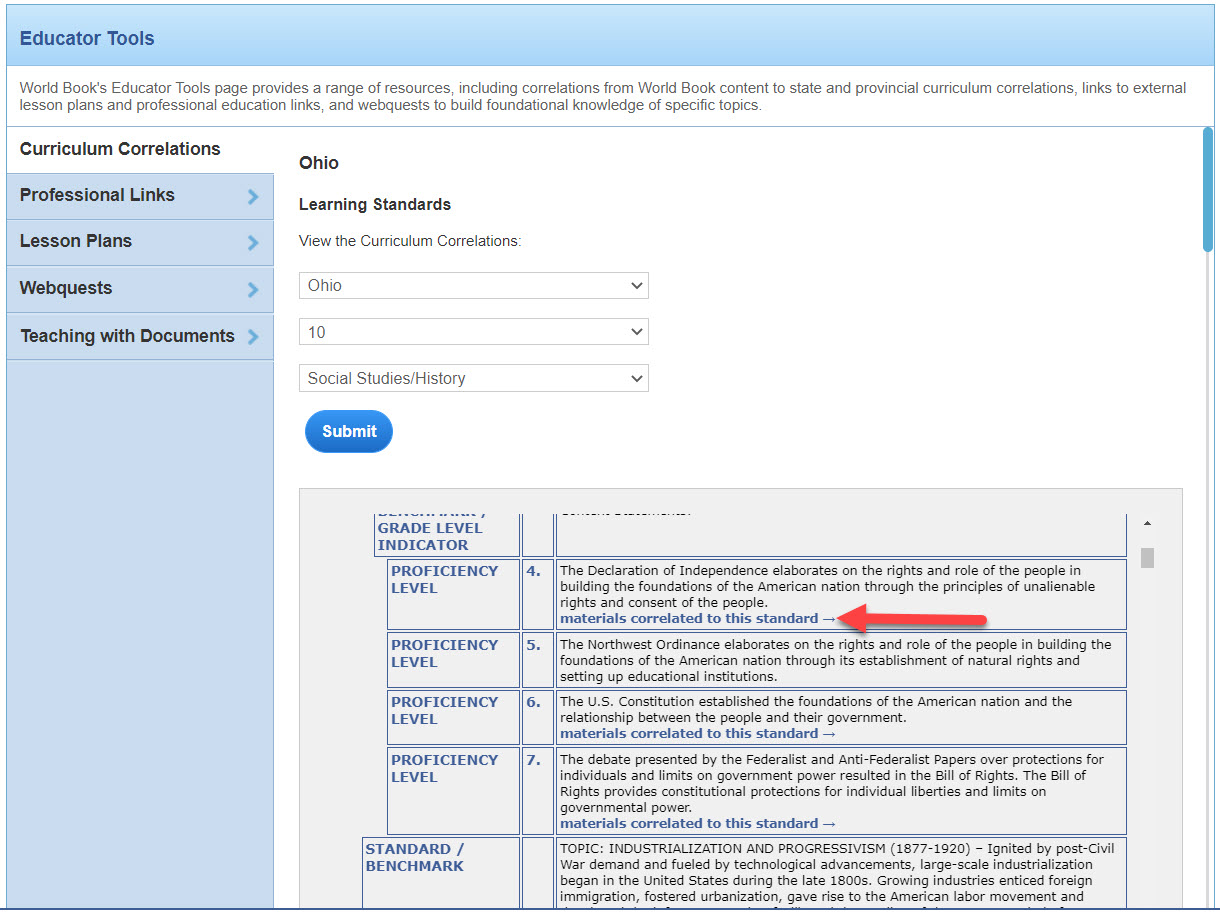
Inclusive teaching emphasizes the strategies and practices educators can use in the classroom to leverage the strengths and tools students of color bring for learning. The criteria and indicators for this category focus on how instructional materials recognize, define, and contribute to the growth and understanding of these strengths.
Content Cultivates an Awareness and Acceptance of a Variety of Ages, Cultures, Races, Religions, and Gender Roles and Identities
With biographies, maps, images, and video, the content in World Book Online represent many cultures, races, religions, and genders providing opportunities for students to see themselves in the content. World Book Kids, World Book Student, and World Book Advanced provide tools and resources to help educators break down barriers and bring an awareness of a variety of cultures, races, religions, gender roles, and identities into the classroom.
Find interactive maps and atlases within all three World Book resources. Interactive maps allow students to explore a country with hyperlinked World Book articles that provide information about population density, capital cities, and cultural points of interest.
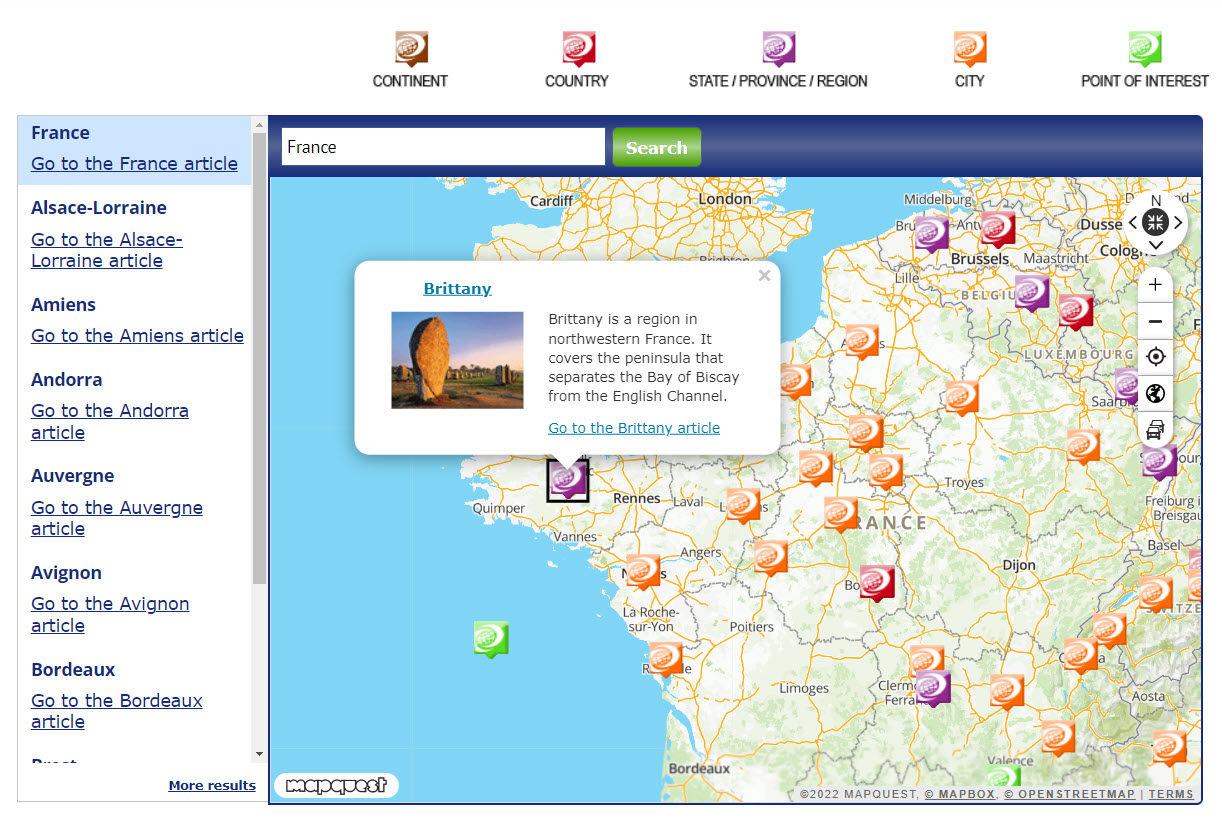
Within World Book Kids, students and educators will find a collection of Outline Maps and Flags. Each outline map can be downloaded as a PDF and printed for offline use.
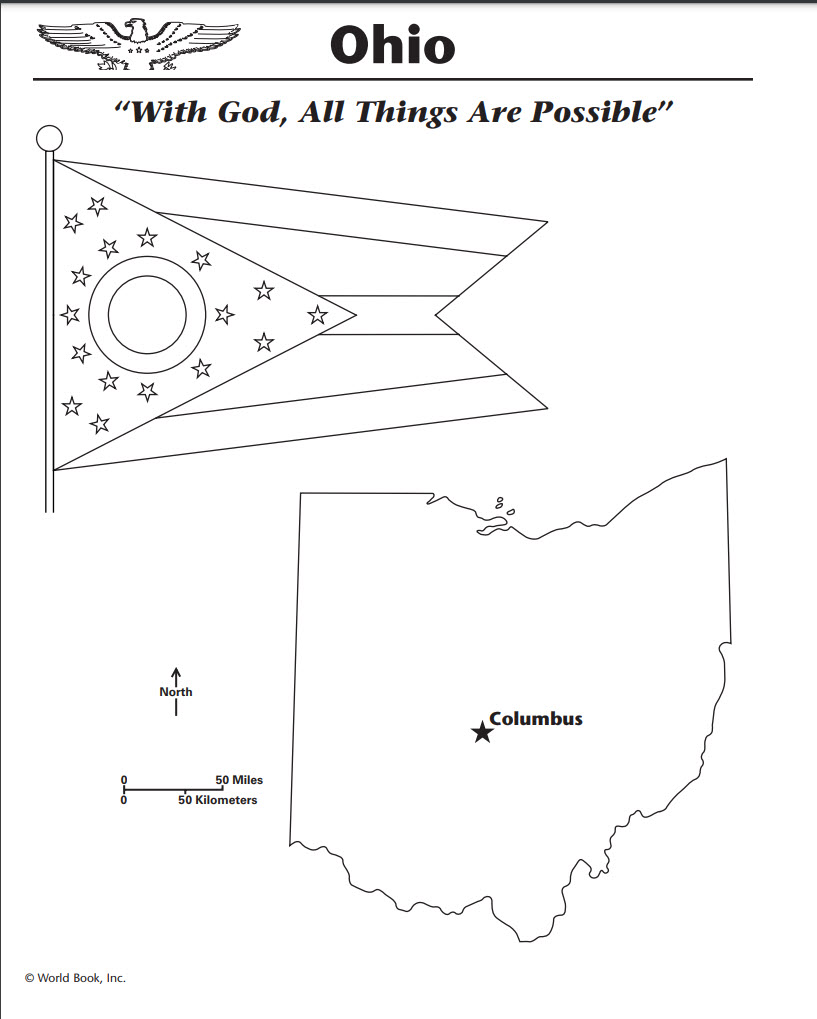
Students in grades 5–10 can use World Book Student's Biography Center to build an understanding of different cultures and learn about the achievements of people who broke racial, gender, and religious barriers. Students can search the collection by name or browse biographies by nationality/ethnicity or gender.
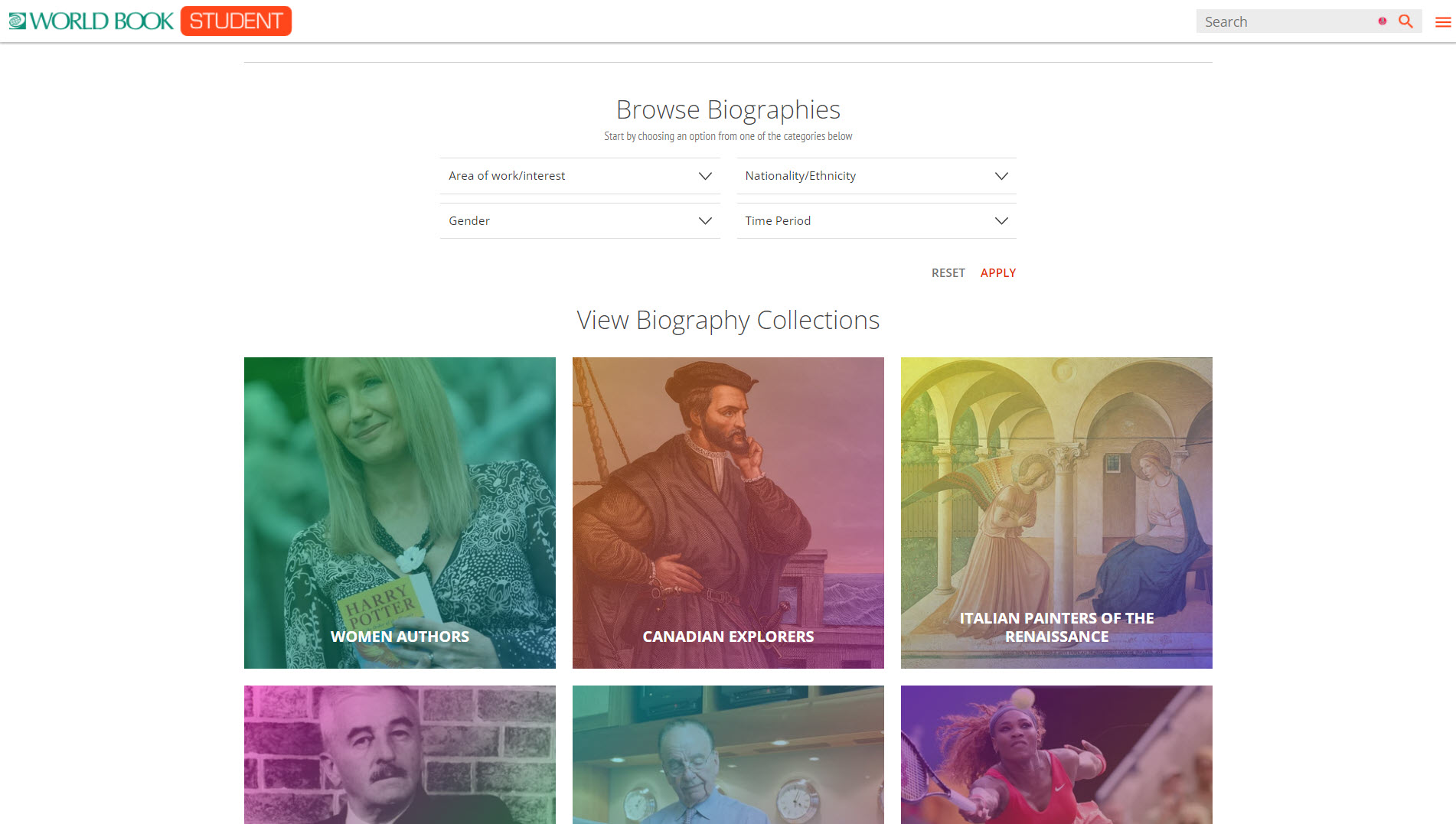
Compare Places allows students to compare locations around the world including countries, territories, continents, states, and provinces. This feature is available in all three World Book resources. Students can compare demographic statistics for two different locations to better understand the similarities nations and locations share, and the differences that divide them. Using Compare Places, students can explore the vital information for the locations selected including related images and maps, recordings, and links to articles from World Book for further exploration. Compare Places supplements both social studies and world language curricula and fosters inquiry as students learn more about the world beyond our borders.
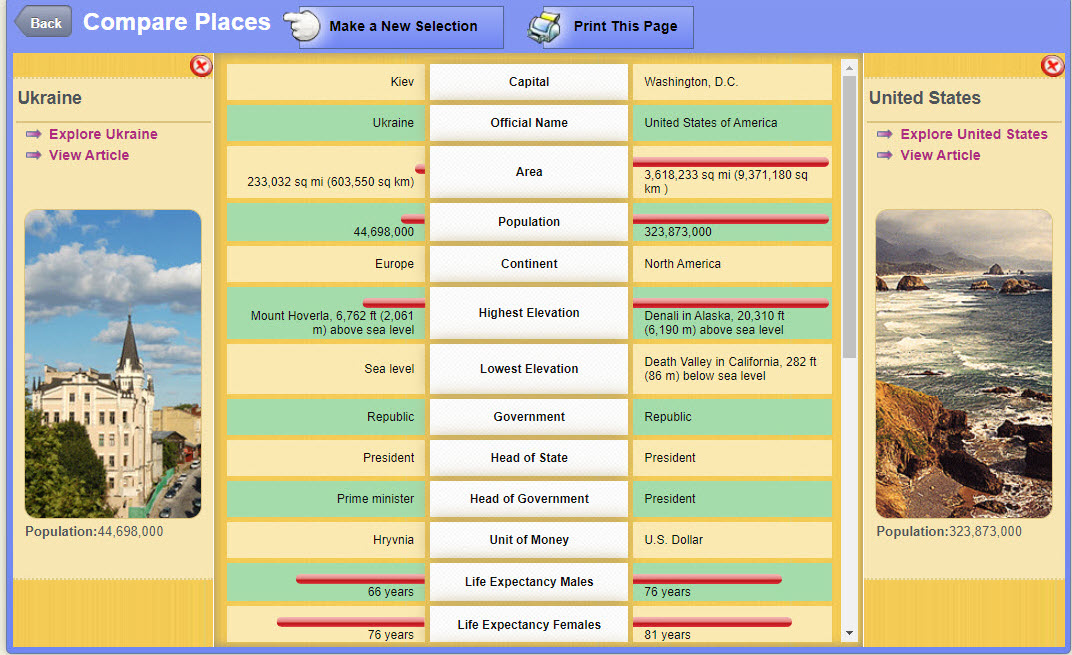
The criteria and indicators for this category ensure that instructional materials provide students and educators with what they need for learning in any form—in person, hybrid, blended, or remote.
Materials Are Flexible To Allow Students To Access and Complete Work Online or Offline as Needed
The ability to access quality digital content, comparable in rigor and alignment offline is important in delivering instruction that is equitable and relevant. Articles from World Book Kids, World Book Student, and World Book Advanced can be downloaded to the device as a PDF or printed for offline use.

Teacher Supports, Documentation, and/or Guides for Effective Use are Present
World Book Early Learning and World Book Kids offer both families and educators lesson plans and guides to ensure that learning never stops for PreK–5 students both in school and at home.
The Guided Reading collection, within World Book Early Learning, includes 48 titles. All 48 titles can be printed or accessed digitally as an eBook. Each title comes with a lesson plan for the educator or adult. Lesson plans provide discussion, writing, and interactive classroom activities to support early literacy skills.
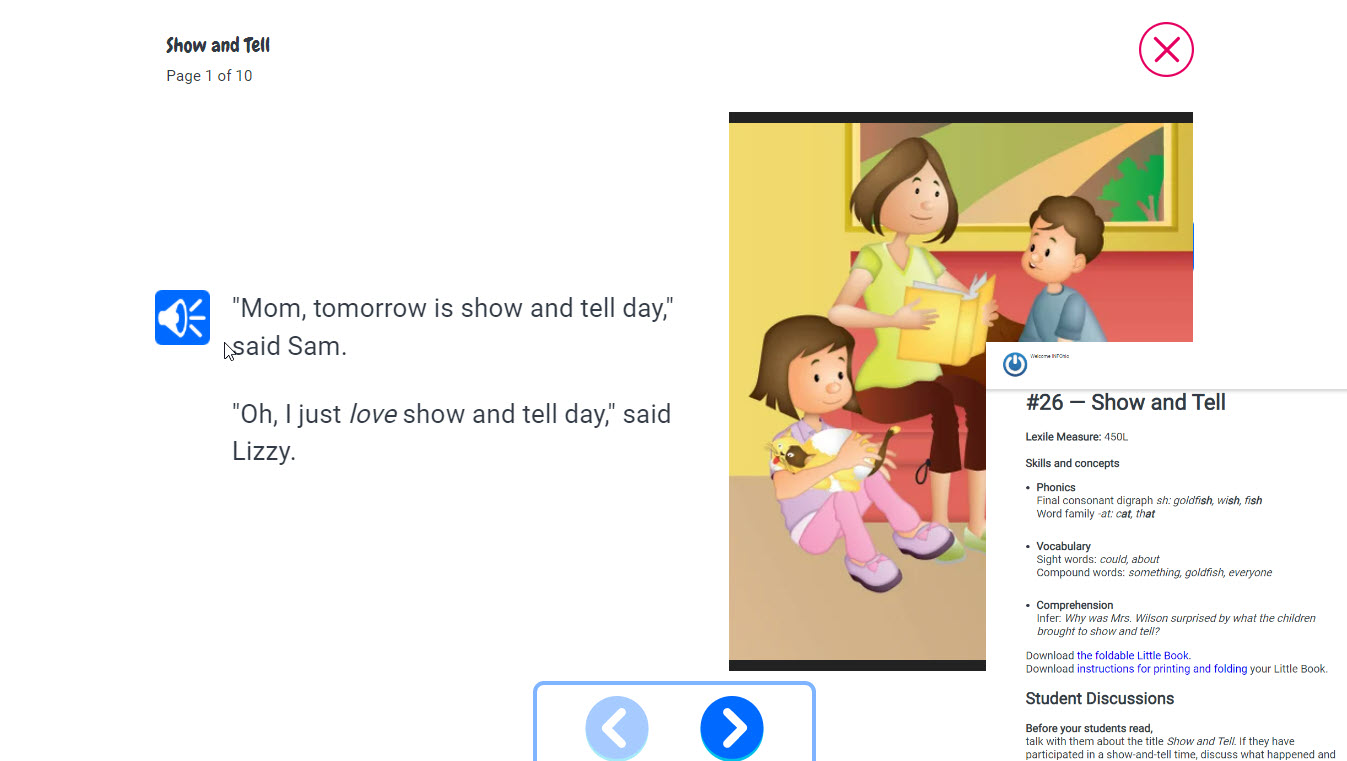
Activities located in World Book Kids include a section For Grownups with lesson plans to accompany crafts, puzzles, and activities for science, language arts, math, art, cooking, and music.
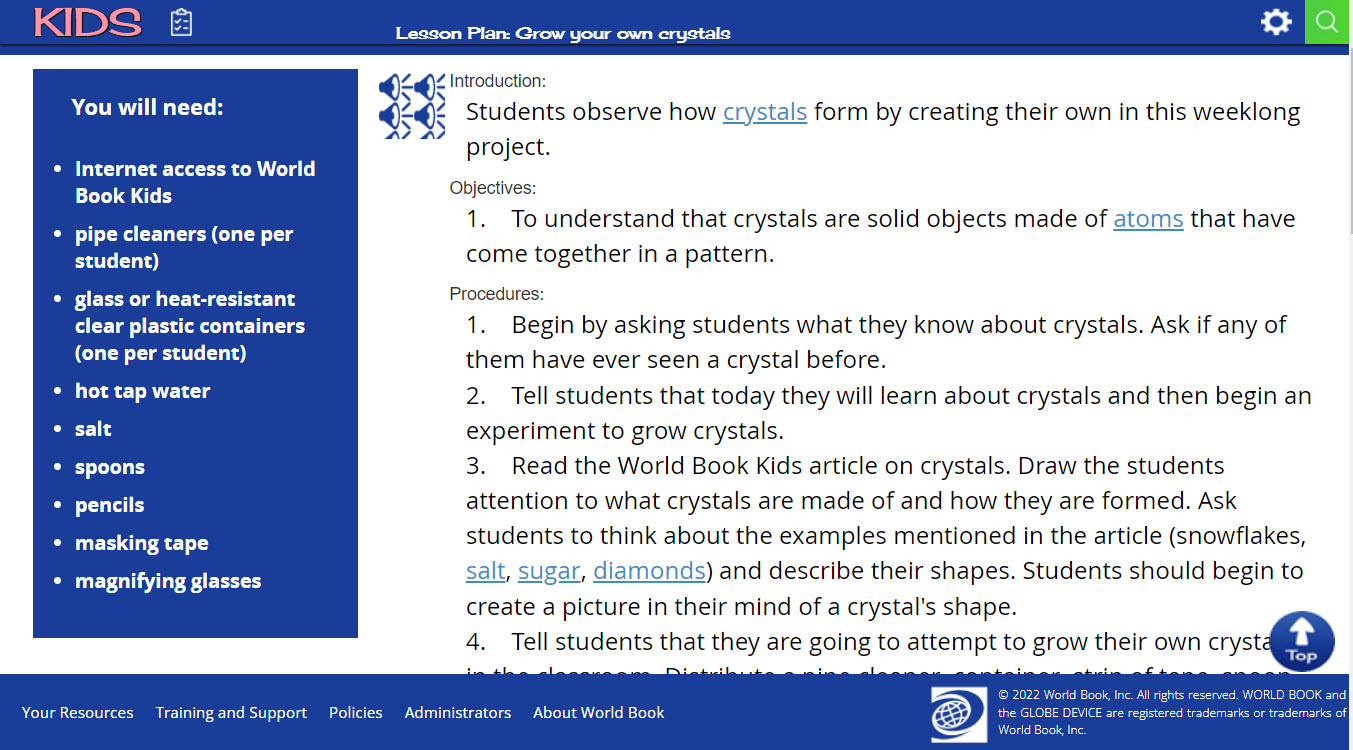
High-quality instructional materials are accessible. These criteria and indicators will help determine how well materials meet the needs of all learners.
Materials follow Web Content Accessibility Guidelines (WCAG)
Text that allows the user to adjust the font size of the text displayed and includes alternate text or captions present on images personalizes the learning experience for the student. Articles located in World Book Kids, World Book Student, and World Book Advanced provide fonts that can be enlarged and captions for images.

The Visual Design of Materials is Clean and Coherent, Lending Itself to Ease of Learning
Educators will find that World Book Online is designed for student learning with articles free of pop-up advertisements that can distract even the most experienced online reader. Articles include a table of contents and the option for readers to chunk information into smaller elements by selecting to view section by section or as one continuous single page.
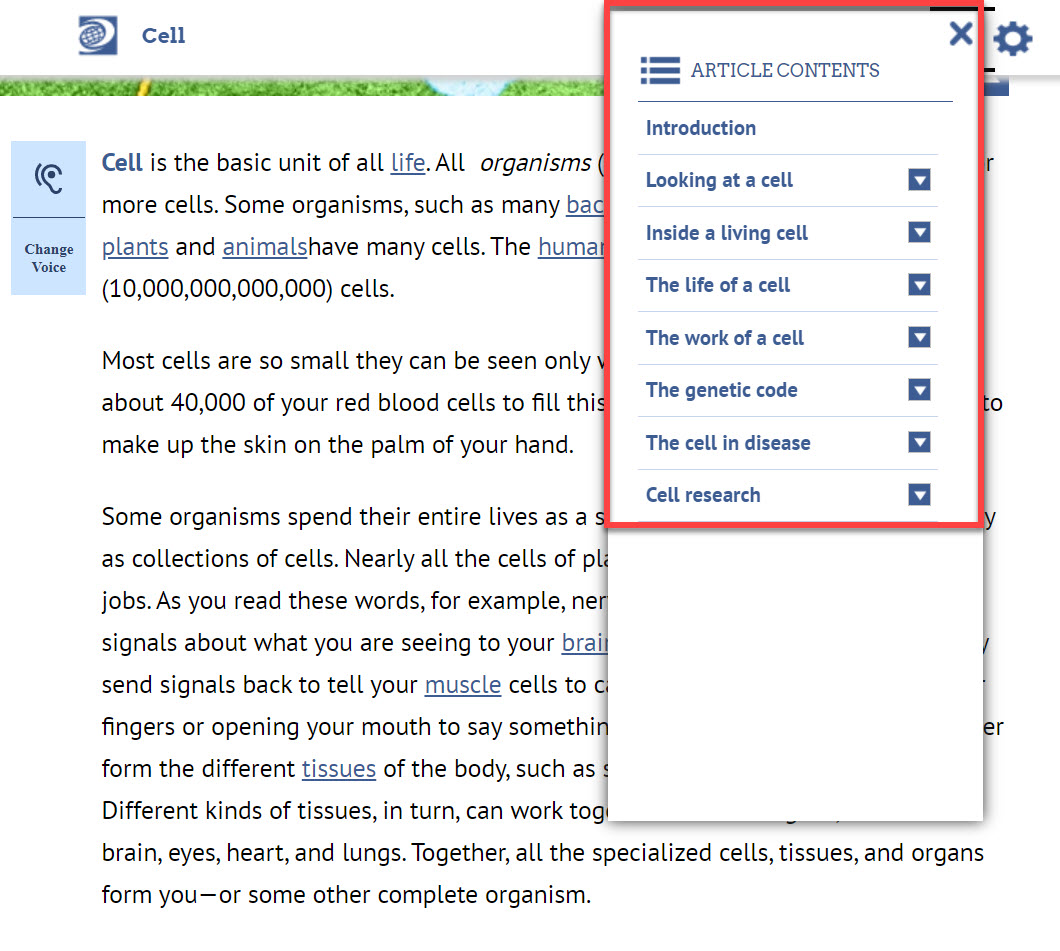

In addition to a cleanly designed learning environment, World Book articles include graphics, diagrams, images, and videos to highlight or emphasize key elements in the text.
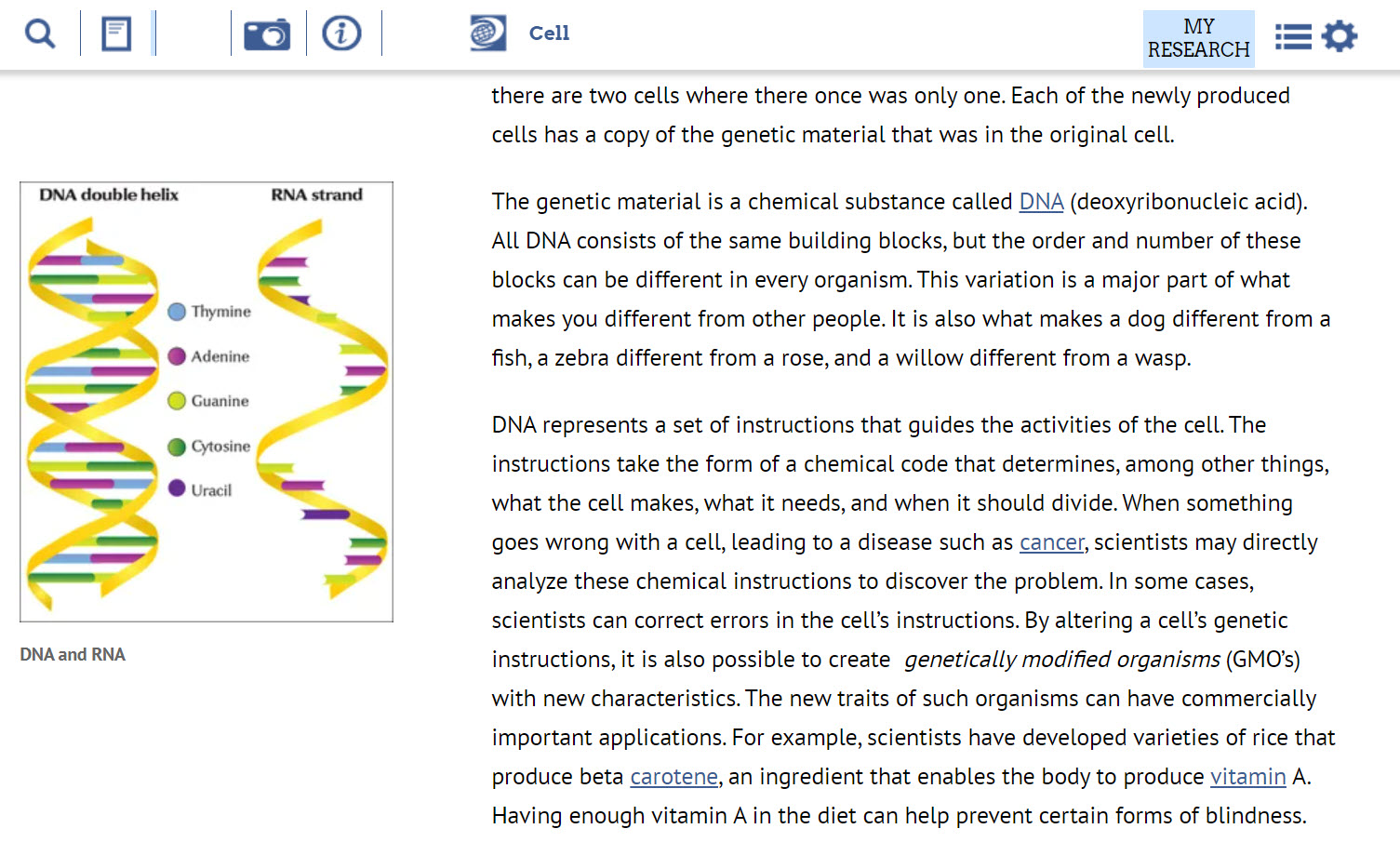
With quality text, images, videos, and tools the World Book databases are a valuable resource for students in grades PreK–12. Learn more about using World Book Online resources in your classroom with INFOhio Learning Pathways classes.
Try the quality instructional materials it offers available at no cost in your classroom. Be sure to share how #INFOhioWorks for you on social media.
Mary Rowland is a Senior Instructional Specialist with INFOhio. A former high school English teacher with 14 years of teaching experience, Mary is an accomplished leader who facilitated professional development in her previous district on integrating web-based tools into the classroom, Google Apps for Education, and writing across the curriculum. During her career, Mary mentored student teachers and served on both the district and building leadership committees. She has earned a BA in English, an MS in Education: Curriculum, Instruction, and Assessment, and is a Google Certified Educator Level 2. Mary is passionate about supporting INFOhio’s mission to help Ohio’s educators integrate the tools and resources to strengthen education for Ohio’s students.
Fetch is avaiable to INFOhio automated schools. If you are an INFOhio school, please log in with your school username/password using the button at the top-left corner of this page.
For more information about Fetch, please visit the Fetch information page or contact INFOhio support at https://support.infohio.org.